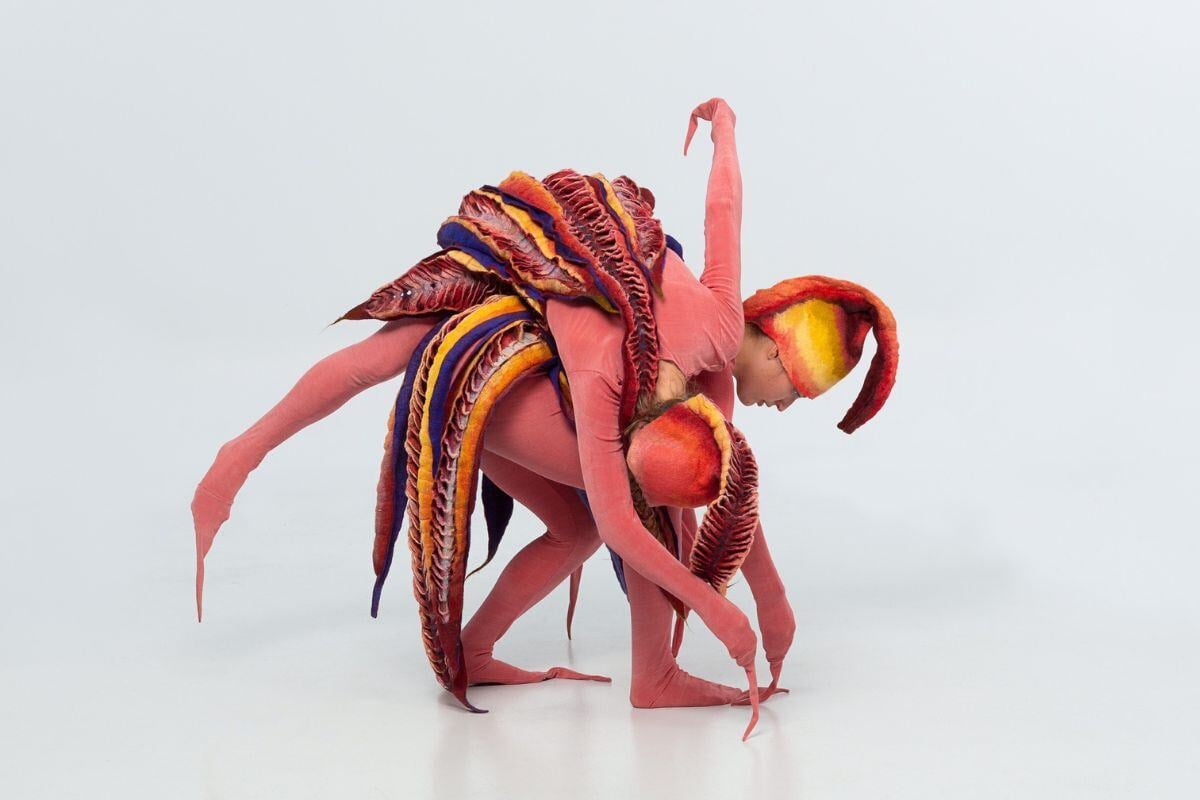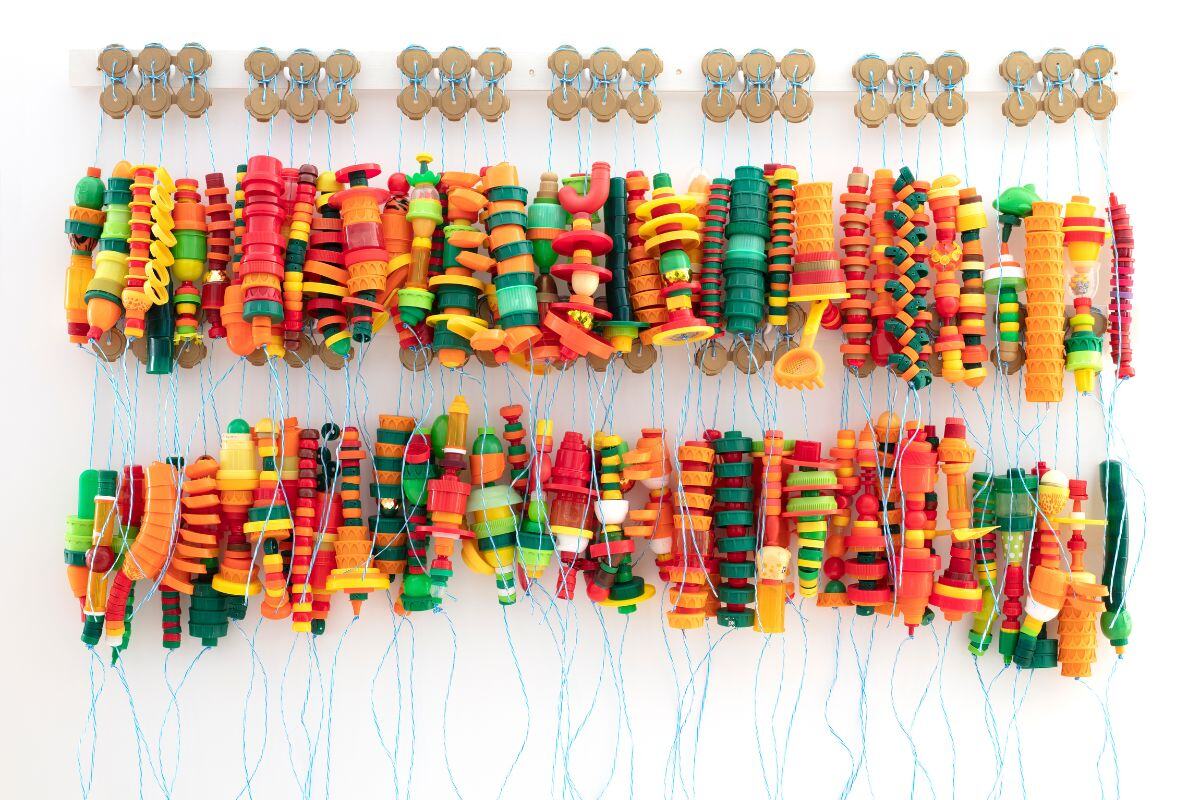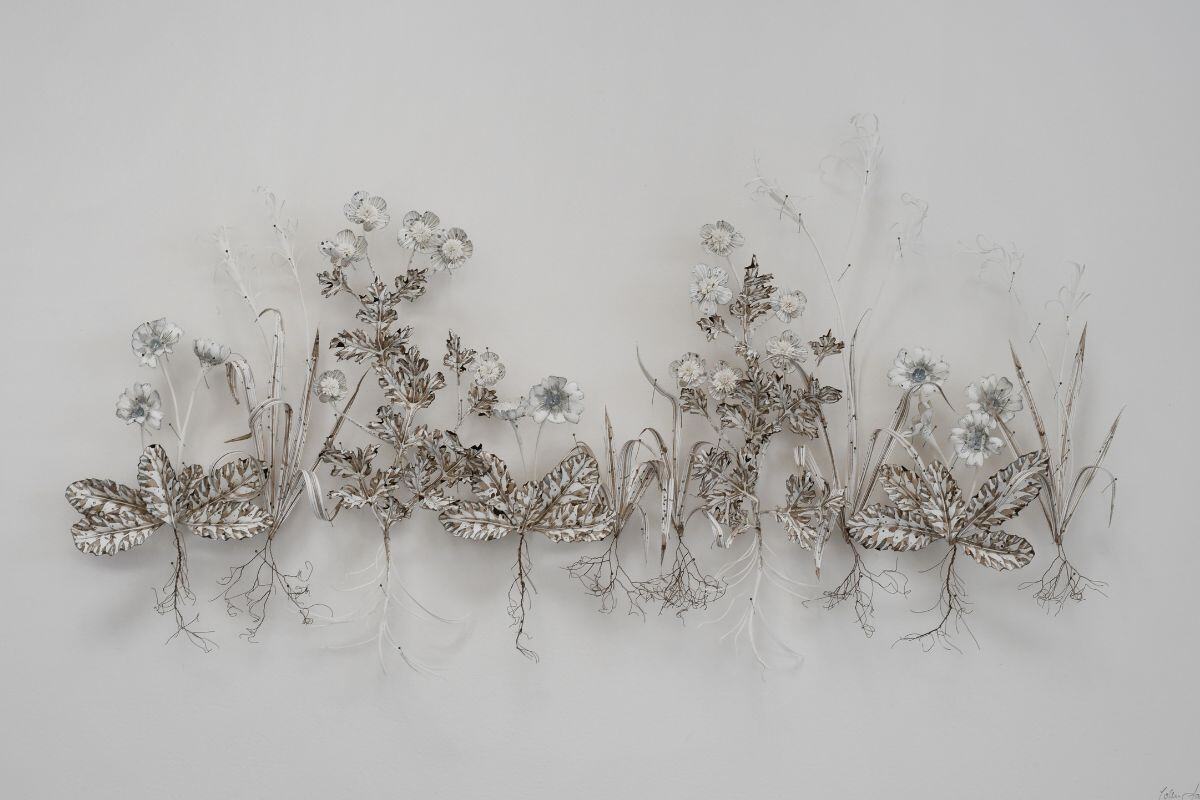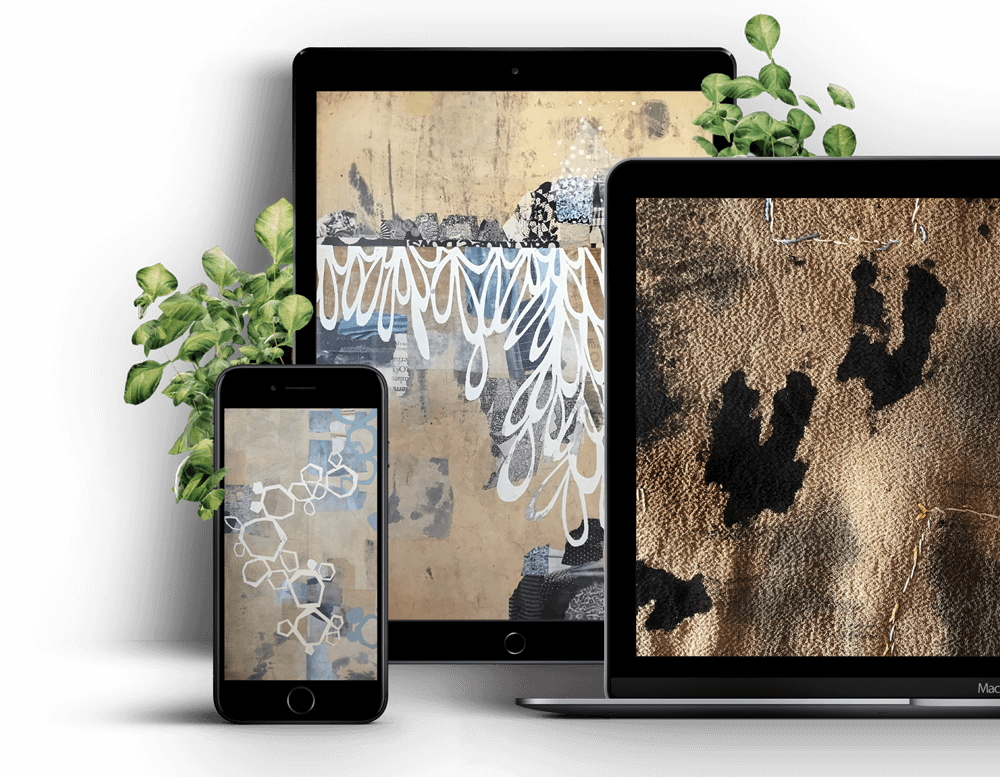Shin-hee Chin
From South Korea to the US, to Fibre Arts Take Two. Fibre artist Shin-hee Chin shares her unique takes on life, art and gratitude.
Shin-hee’s Friday Feature Artist Interview can be found at the bottom of this page.
Shin-hee Chin is an accomplished fibre and mixed media artist, with her works receiving numerous awards. Shin-hee is proud to have been a Professor of the Visual Art Department at Tabor college since 2004. Having spent half her life in South Korea and the past three decades in the United States, Shin-hee has experienced two vastly different cultures. Influenced by feminist traditions, Christian spirituality, and Eastern philosophy. Shin-hee has created a coherent narrative, addressing complex issues of the female body, cultural identity, cultural hybridity, and the sense of belonging.
Fibre Arts Take Two enjoyed Shin-hee’s unique perspectives on art, life, and gratitude.
Finding art
Growing up in a turbulent era in South Korean history, Shin-hee’s path to art was not a smooth one. “I grew up in a Christian family,” she says, “and I didn’t know whether I had a talent or not in art. My father taught 18th-century English literature, I grew up with all the beautiful poems, and my Dad translated many English poems into Korean. Growing up in that environment, I used to sit in my father’s study, studying all the literature. So I thought my life would be following my father’s footsteps.”
After the end of the Korean war, Shin-hee spent several years teaching but always knew her passion lay elsewhere. “I didn’t know whether I had a talent or not, so I asked my parents whether I could pursue art,” says Shin-hee, “and then they said, ‘Oh, in our family, we don’t have any visual artists. We have our musicians, and we have teachers’. But when I drew, I found I became myself. So I thought, ‘This is my path.’”
For Shin-hee, art was her literal salvation., “Before then,” she says, “life was so much sadness and so much hardship, so I thought I’d be happy in heaven. But when I paint, it’s like the salvation of heaven can be in my hand.”
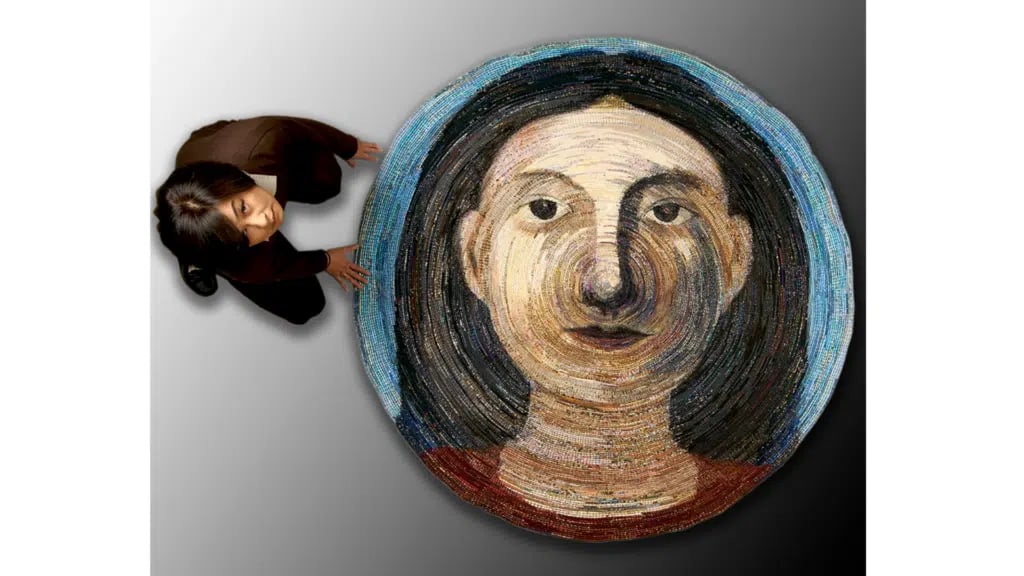
Finding herself
The switch to visual arts was difficult for Shin-hee, who was committed to honouring her father’s path. “At the time, I felt like I was betraying him,” Shin-hee says, “because I wanted to please him, but then at the same time, I wanted to be myself. My parents helped me be an artist, but my dad was still unsure because he knew I could succeed in literature. However, about ten years later, when I had a show in America, he told me that I chose the right thing.“
Happily, not only did Shin-hee’s family come around, she chose the path that was right for her soul, “I speak up for myself because if I don’t do art, my life would be miserable. I thought they chose my happiness. But then when you choose for your own happiness, that makes other people happy too.”
Imperfection in art
“I kind of learned that, as a housewife, you have multiple jobs to do,” Shin-hee says when asked about her process. She goes on to say that she has had to abandon the perfectionism that her South Korean upbringing instilled in her, “As I work, I find that nothing is perfect. I began embracing the imperfection, and that gave me freedom.”
“Unfinished work scattered in the house makes me crazy, but that is the reality. I don’t have the luxury of time. I have several tables just to spread my work. And then the other work, I put it into the box and then just labeled it. I have a list of work that is going on and what is done. I joke with myself about the process.”
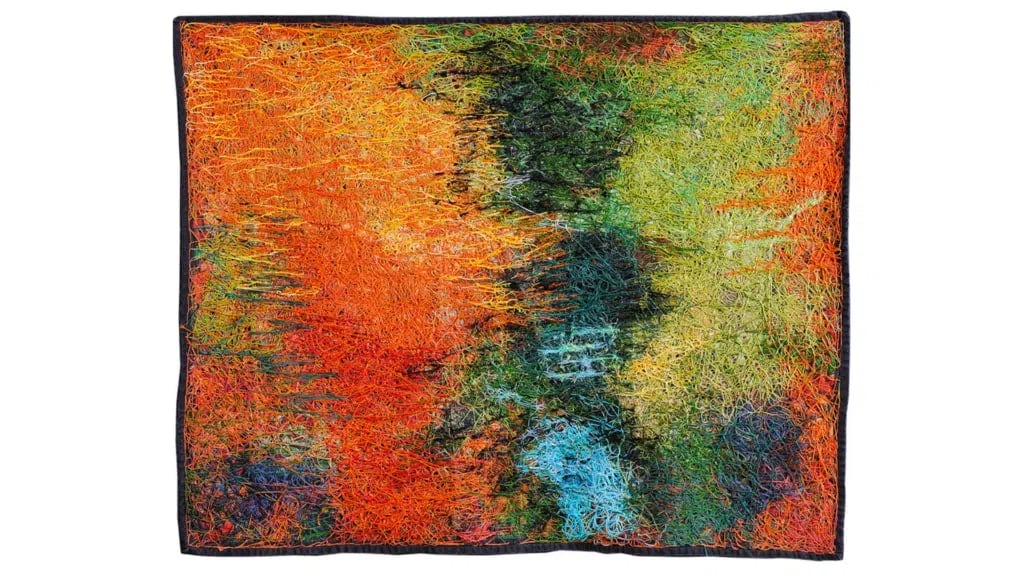
Behind the Label
Behind the Label may well be Shin-hee’s opus. The fascinating piece is made from hundreds or perhaps thousands of clothing labels.
“At first, I started with the household labels,” explains Shin-hee, “My kids get itchy with the labels. I just removed them from the clothing. But then each label was done by some kind of designer, and so on. I wanted to show all the labels. And in this case, there’s no seam allowance so that I would stitch in each label. Each label coat has about 150 to 200 labels.”
At first, Shin-hee didn’t see the potential of her work, but she couldn’t bring herself to throw it away. Somehow, the piece began to grow. “Without thinking, I made one piece,” says Shin-hee, “And the next year, I started to collect all the labels, and then three years later, I made another one and then I had two. Okay, why don’t I just keep on doing it? So without thinking about making installation art, I just kind of made the labels, and then, several years later, I thought, wow, this tells us about our family life. In the first one, there’s a lot of Korean clothing and then a lot of baby clothing. And then it moves on to different places and different brands for my kids as they grow, and it shows our family history.”
More than a family history, Behind the Label, is also a tribute to labourers in developing nations worldwide, “Those are the countries that I didn’t think about,” says Shin-hee, “but I was able to use their labour in my family’s clothing. I found it a kind of gratitude for unknown labourers’ work. I want to juxtapose the reality that we all have benefited from the labourers. One household family is connected to the world. We are all somehow interconnected. As the Bible teaches, it shows the interconnectedness of our humanity.”
Final words
Shin-hee’s advice mirrors what she learned in her journey; forget perfection. “Instead of making a perfect piece,” she says, “you make many mistakes and trials and errors. Don’t worry about making a mistake. Through the mistake, you learn more about yourself and about the material. We don’t have to be in the myth of perfectionism.
Nothing is perfect on this earth. It’s like you are going up the mountain; you go to the top, and you don’t know how far you will go. But once you get there, you know how to come down. So the art of making is another kind of mystery. And so keep an eye open, and then invite yourself to the unknown.”
Sharing art
“I’m so thankful that I became myself,” says Shin-hee on what she is most proud of, “I don’t know whether I am proud of that or not. But I think that’s why I do art. And through art, I can converse in different ways and with different cultural backgrounds. So sharing art is the most thankful thing in my life.”
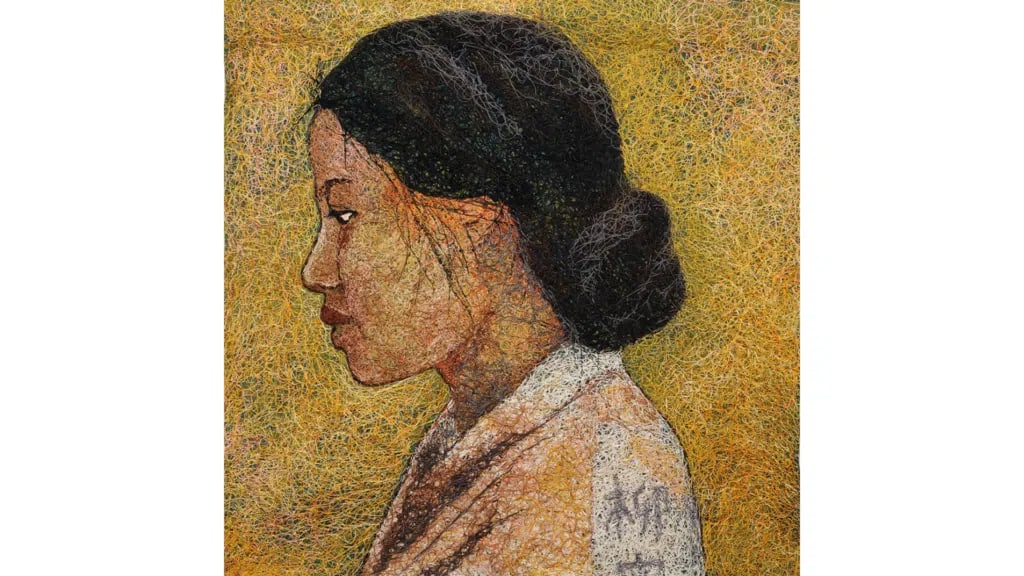
About the artist
Shin-hee Chin is a fibre/mixed-media artist and Professor in the Visual Art Department at Tabor College. Chin’s work has been exhibited nationally and internationally, including in Washington DC, Tokyo, Hampton, Geneva, Tainan, and Seoul.
Chin’s work was featured on the cover of the Studio Art Quilt Associates Journal (Spring 2017) and the cover of the Surface Design Association Journal (Summer 2014).
As an esteemed educator for 17 years, Chin has taught drawing, painting, colour theory, and mixed media. She was elected as Distinguished Faculty in 2008. Influenced by feminist traditions, Christian spirituality, and Eastern philosophy, Chin has created a coherent narrative addressing the complex issues of the female body, procreation and motherhood, mother tongue, cultural identity, cultural hybridity, and sense of belonging.
Notifications
Join Our Newsletter
OUR YOUTUBE CHANNEL
View our interviews and more on our Youtube channel!
OUR FACEBOOK GROUP
Join our Community and stay updated with our upcoming announcements!

